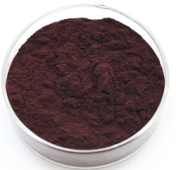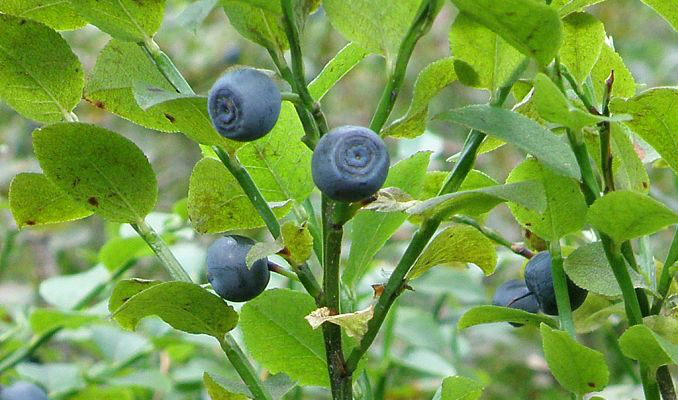12 Years Manufacturer Bilberry extract Factory in Korea
12 Years Manufacturer Bilberry extract Factory in Korea Detail:
[Latin Name] Vaccinium myrtillus l.
[Plant Source] Wild bilberry fruit cultivated from Sweden & Finland
[Specifications]
1) Anthocyanidins 25% UV (Glycosyl removed)
2) Anthocyanins 25% HPLC
3) Anthocyanins 36% HPLC
[Particle size] 80 Mesh
[Loss on drying] ≤5.0%
[Heavy Metal] ≤10PPM
[Pesticide residue] EC396-2005, USP 34, EP 8.0, FDA
[Storage] Store in cool & dry area, keep away from the direct light and heat.
[Package] Packed in paper-drums and two plastic-bags inside.
[General feature]
1. 100% extracted from European bilberry fruit, approved ID test from ChromaDex andAlkemist Lab;
2.Without any adultery of other relative species of Berries,such as Blueberry, Mulberry,Cranberry,etc;
3. Pesticide residue: EC396-2005, USP 34, EP 8.0, FDA
4. Directly import the frozen fruit from North Europe;
5. Perfect water solubility,water insolubles<1.0%
6. Chromatographic fingerprint match EP6 requirement
[What is bilberry fruit]
Bilberry (Vaccinium Myrtillus L.) is a kind of perennial deciduous or evergreen fruit shrubs, mainly found in subarctic regions of the world as in Sweden, Finland and Ukraine, etc. Bilberries contain dense levels of anthocyanin pigments, which was said popularly to have been used by World War II RAF pilots to sharpen night vision. In fork medicine, Europeans have been taking bilberry for a hundred years. Bilberry extracts entered the healthcare market as a kind of dietary supplement for effects on vision enhancement and visual fatigue relief.
[Function]
Protect and regenerate rhodopsin and cure the eye diseases;
Prevent the cardiovascular diseases
Antioxidant and anti-aging
Softening blood capillary, enhancing the heart function and resisting cancer
Product detail pictures:

Related Product Guide:
It can be our accountability to satisfy your preferences and competently provide you. Your satisfaction is our greatest reward. We are searching ahead towards your visit for joint growth for 12 Years Manufacturer Bilberry extract Factory in Korea , The product will supply to all over the world, such as: Angola, Maldives, Portugal, Relying on superior quality and excellent post-sales, our products sell well in America, Europe, the Middle East and South Africa. We are also the appointed OEM factory for several worlds' famous products brands. Welcome to contact us for further negotiation and cooperation.
Presenting Veg Special Recipe. Pumpkin Dish that we call in Hindi Kaddu Ka kees.
Preparation Time: 15 minutes
Cooking Time: 30 minutes
Servings: 4-6 persons
Ingredients :
– 1/2 kg Pumpkin (Kaddu)
– 12 gms salt
– 4 tsp Red Chilli Powdered Roasted Dry
– 3 tsp coriander seeds powered and roasted dry
– 2 tsp cumin seeds powered and roasted dry
– 50 gms tilli [sesame seeds] roasted dry and coarsely ground dry
– 2 tsp amchur powder
– 100 gm pure ghee or any oil
– Pinch of Hing [asafoetida ]for baghar/dhungar
Recipe:
–Steam the pumpkin pieces till nicely cooked. Mesh them finely.
add salt, red chillies. coriander seeds, cumin seeds, tilli and
amchur powder and mix well.
–In a separate pan heat the Ghee. When it is hot, add little by
little into the pumpkin, stir well.
–Give Dhungar – Take a iron katori and place it in the centre of the
cooked dish Put the live coal in it then put the Hing on the burning
coal. Over the spice, put a little Ghee and cover.Throw away the
coal while serving.
Realizando pruebas con secador.
The factory technical staff not only have high level of technology, their English level is also very good, this is a great help to technology communication.









